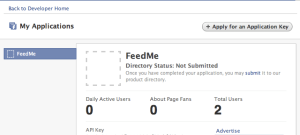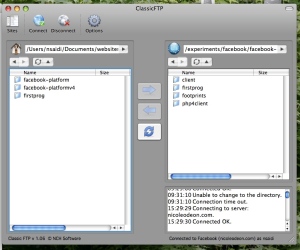As I type this, my cable Internet access is down for the count. Unfortunately my former backup ISP has wised up and password-protected their router, so I’m pecking my post into the notes field of a fake address book entry so I can sync it up on my iPhone.
Besides sucking, this also cuts me off from what I viewed as my last “resort,” if you will: the Virtual Vacation. Call me pathetic, call me what you will. But when I feel the need to travel and can’t, jumping on Google Maps and streetview is probably the closest I’ll get.
You might wonder why I don’t, you know, just go somewhere. Or, just learn to wallow happily in my faux-misery mudhole. The answer is, I have a vacation planned in early June and, well, life is too short to let it slide by. I also just bought a fairly expensive camera to take on future trips. I’m happy about this investment but also have to be prudent about my dollars. And, I have activities planned this weekend, and some fairly ambitious travel plans later in the year, and some anxiety about anything but the minimal amount of planning (due to the unpredictable nature of my job and lifestyle). So I’m not necessarily complaining or anything, I just want to be able to sample all that life has to offer.
When you’ve got gadget lust and wanderlust at the same time, sometimes you have to make compromises. And so, the geography major in me jumps at the opportunity to take an interdisciplinary approach to escapism. That is, using my computer and other modern technology to experience the highways and byways of my country, as well as the cultures of the world. It’s kind of exciting, and has the benefit of plenty of context and never really getting lost. You are truly free to go places you wouldn’t otherwise go and discover dream destinations you never knew you wanted to see.
It’s comforting to know that I’m actually not the only person who does this. I read a story in the New York Times detailing how two friends — caught in the throes of wanderlust — got together and pretended their mice and keyboards were the dashboard of a car. Streetview became the vehicle by which they took a road trip on their screens. They actually made a viral video bloggy-thingy about it that includes their dialogue and observations of the “roadside attractions” seen via streetview, which, the article wisely observes, aren’t that much different from what you might say on a real road trip.
My mind was a little blown in that moment, not so much in the earth-shattering way, but more in the synchronous way. I totally *get* what they are trying to accomplish, as well as the implications of it all. That and the interesting phenomenon of one-minute online sensory vacations, kind of got the wheels spinning in my brainz.
To what degree can you experience a place without actually going there? And how accurate is your research versus the reality? I’m trying not to *go there* in terms of virtual reality and holodecks and simulations, but that’s somewhere in there, too. I propose an exercise: Plan a virtual vacation in as much detail as possible before an actual visit, and then actually go there and see how it stacks up.
Just to get a little weirder on you: There’s a possibility that taking a virtual vacation before a real visit could have profound implications on your actual viewpoint when you go. And there’s also the possibility that taking a virtual vacation could be just as fulfilling as a real vacation, since one could argue that even “reality” as we know it is constructed from perceptions. French philosopher Jean Baudrillard explored the simulated nature of perceived reality in his diatribe, er, treatise, Simulacra and Simulation. He basically argues that reality as we know it is to some degree symbolic, and that the simulacrum (symbol) is increasingly trumping that which it symbolizes — and I know that’s oversimplifying things.
From a scientific perspective, I can’t help but think we’re just a mass of atoms and particles and whatnot, organized somehow via energy and sculpted by the hands of the deity of your choice. What purpose does travel serve then? And is going somewhere — an inherently symbolic experience — truly different than simulating it? Well *of course* you say, traveling to another place is a fulfilling experience for the sights, smells, activities and interactions with other human beings. Is it? I would tend to agree with you, but I think it’s something interesting to think about, particularly when life gets in the way.
Back to earth now. The takeaway from all this early-morning thinking I’m doing is that there is a ton of value in trying to construct an image of a place, only to tear it down by actually going there. You get more out of the whole experience than the sum of the two stages of analysis, because there is a certain synthesis that takes place during the transition. And even if you don’t ultimately end up visiting a place — perhaps the virtual vacation helped you avert disaster, or you just can’t get around to visiting this place, ever — these short escapist journeys undertaken with mouse and keyboard can be quite valuable. Regardless of their accuracy and depth, they’re their own kind of vacation in and of themselves and can let you go places that you would never get to go otherwise.
Back to earth now. The takeaway from all this early-morning thinking I’m doing is that there is a ton of value in trying to construct an image of a place, only to tear it down by actually going there. You get more out of the whole experience than the sum of the two stages of analysis, because there is a certain synthesis that takes place during the transition. And even if you don’t ultimately end up visiting a place — perhaps the virtual vacation helped you avert disaster, or you just can’t get around to visiting this place, ever — these short escapist journeys undertaken with mouse and keyboard can be quite valuable. Regardless of their accuracy and depth, they’re their own kind of vacation in and of themselves and can let you go places that you would never get to go otherwise.















Recent Comments